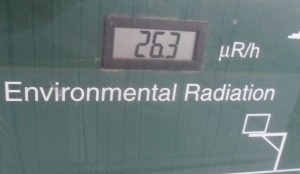“….we did not say Iran had nuclear weapons. We never said such. We also did not say that Iran made a decision to obtain nuclear weapons. That we also did not say.”-Yukiya Amano, International Atomic Energy Agency
12 June 2012, apparently all the excitement over Iran’s nuclear program was hyperbole. The Obama administration just exempted seven more countries from the oil sanctions.
In March 2012 France, Germany and Japan were exempted. Now India, South Korea, Turkey, Sri Lanka, Malaysia, Taiwan and South Africa. Secretary of State, Hillary Clinton, said it was because those countries have dramatically reduced their purchase of Iranian oil.
I’ve been following this and I can say that several of those countries have not reduced their purchases of Iran oil, even increasing their future orders!
U.S. officials (both in the Obama administration and in Congress) have been bold face lying to the U.S. news media, claiming that the sanctions have hurt the Iranian economy. If that’s so then why is Iran swimming in more money than ever before?
Today it was revealed that Iran’s Gross Domestic Product (GDP) has doubled in the past fives years, despite decades of old sanctions, and despite the new sanctions: “Due to the Islamic Republic of Iran’s economic capacities we have been able to move through the sanctions and will do the same in future as well.”-Seyed Shamseddin Hosseini, Iranian Ministry of Economic Affairs & Finance
According to the International Monetary Fund (IMF) Iran now has the 17th strongest economy in the World, thanks to their GDP rising to $482 billion USD last year. The IMF expects Iran’s GDP, for 2012, to be more than 3%, and remember, that’s under sanctions!
Iran’s own stock exchange (Tehran Stock Exchange or TSE) has seen a 280% growth rate in the past five years! The TSE is doing almost too well, so much so that Iranian officials issued a statement to try and calm investors: “Concerns about bubble growth are unfounded. The reason for the rise in the index is the flow of cash into the stock market.”-Ali Sahraie, TSE operations manager
Stock market analysts believe Iran’s TSE has a lot more room for growth: “Even though (the market) is rallying I still think of it as under performing.”-Ahmad Alanani, works for London based Exotix
The United Nations International Atomic Energy Agency (IAEA) boss just came out (in an interview with the Wall Street Journal) and said Iran has no nukes, and that the IAEA could find no evidence suggesting that Iran is trying to build nukes.
However, the IAEA did allude to possible nuke weapons programs that were active prior to 2003: “We don’t have the impression that they are re-concentrating their activities. Before 2003 the work was quite systematic. And after that it is more dispersed. And this situation continues.”-Yukiya Amano
Sanctions against Iran, by the European Union, are set to go into effect on 1 July.
